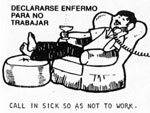At a Glance
Topics
Features
Duration
Grade(s)
Lesson Format
Download
Decoding U.S. Foreign Policy: The Iran-Contra Affair
This lesson challenges students to read internal official documents and personal accounts about the Iran-Contra Affair to learn more about it and U.S. foreign policy during the Cold War.
Review

This lesson, part of the HERB collection at the American Social History Project, allows students to examine a series of primary source documents related to the Iran-Contra Affair and discuss the central issues surrounding these events. In addition to great background information for the teacher, there is a useful timeline and graphic organizer that help students access the content.
One of the strongest components of this lesson is the unique documents it uses. In addition to a document entitled “The C.I.A. Advises Nicaraguans How to Sabotage the Sandinista Government,” there are handwritten diary entries by Secretary of Defense Casper Weinburger and internal communications within the CIA . With the aid of the document analysis form, students discover the differences between internal official documents and personal accounts thus allowing them to see how audience and purpose affect a document’s contents. This document analysis form also asks students to consider what each document reveals about the unfolding of the Iran-Contra Affair and U.S. foreign policy during the Cold War. Given that the creators have identified the approximate reading difficulty of each document, teachers can use this information to purposefully group students.
This is already a flexible lesson and we suggest teachers consider adding a summative assessment task that requires student writing. As is, the lesson includes a final discussion and guiding questions but no student product requiring that individual students show their understanding. This lesson could also serve as a great scaffold for a document-based essay on motivating factors in U.S. foreign policy during the Cold War.
Notes
| Field | Criteria | Comments | ||
|---|---|---|---|---|
| Historical Content | Is historically accurate? | Yes |
||
| Includes historical background? | Yes |
|||
| Requires students to read and write? | Yes Students read the documents and complete a document analysis form. They don’t have a final written product for this lesson but one could easily be created. |
|||
| Analytic Thinking | Requires students to analyze or construct interpretations using evidence? | Yes |
||
| Requires close reading and attention to source information? | Yes |
|||
| Scaffolding | Is appropriate for stated audience? | Yes |
||
| Includes materials and strategies for scaffolding and supporting student thinking? | Yes |
|||
| Lesson Structure | Includes assessment criteria and strategies that focus on historical understanding? | Yes |
||
| Defines clear learning goals and progresses logically? | Yes |
|||
| Includes clear directions and is realistic in normal classroom settings? | Yes |
|||